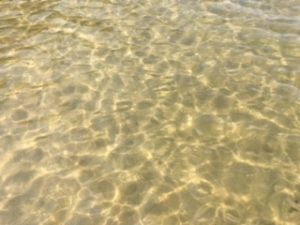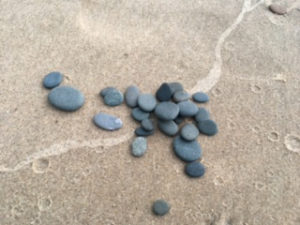How To Make a Grain of Sand
 Lake Michigan, the five great lakes are inland seas. The imagination fails at the immensity of the amount of fresh water, 21 percent by volume of the world’s surface fresh water. While wading on a sand bar at the edge of Lake Michigan my attention was drawn by the sand that enveloped each step. My bare foot sank several inches into the fine-grained sand. What is a beach without sand? Typically to my mind beach and sand are equivalent. I do not think any further about the origin and the durability of sand.
Lake Michigan, the five great lakes are inland seas. The imagination fails at the immensity of the amount of fresh water, 21 percent by volume of the world’s surface fresh water. While wading on a sand bar at the edge of Lake Michigan my attention was drawn by the sand that enveloped each step. My bare foot sank several inches into the fine-grained sand. What is a beach without sand? Typically to my mind beach and sand are equivalent. I do not think any further about the origin and the durability of sand.
 Along the gentle curvature of the shore disappearing into the north horizon, the energy of the waves is absorbed by the fine grains of sand accumulated in the lake. Perhaps the friction caused by the energy absorption of wave action is a final step in the process of making sand. Temperature differential causes wind driven waves that expend their force on the sand bar upon which I stand. The grains are refined over and over.
Along the gentle curvature of the shore disappearing into the north horizon, the energy of the waves is absorbed by the fine grains of sand accumulated in the lake. Perhaps the friction caused by the energy absorption of wave action is a final step in the process of making sand. Temperature differential causes wind driven waves that expend their force on the sand bar upon which I stand. The grains are refined over and over.
Sand, the sediment of the sun.
 Just to think about the process is to be conscious of the expanse of time involved in Natures work. I read that the rock and minerals of sand are broken down by wind, rain, freezing and thawing cycles into smaller and smaller, down to about 2.0 mm in size. Here in the mid west this all started with the glacial drift, the advance and retreat of massive ice sheets. Geologists refer to the Pleistocene Epoch, some 1,800,000 years ago. Rocks, sand sized particles are deposited and sorted by water. Ice gouged out the basins of the five great lakes before there was writing or the internet.
Just to think about the process is to be conscious of the expanse of time involved in Natures work. I read that the rock and minerals of sand are broken down by wind, rain, freezing and thawing cycles into smaller and smaller, down to about 2.0 mm in size. Here in the mid west this all started with the glacial drift, the advance and retreat of massive ice sheets. Geologists refer to the Pleistocene Epoch, some 1,800,000 years ago. Rocks, sand sized particles are deposited and sorted by water. Ice gouged out the basins of the five great lakes before there was writing or the internet.
I read somewhere that sand is a non renewable resource at least within human time frames.